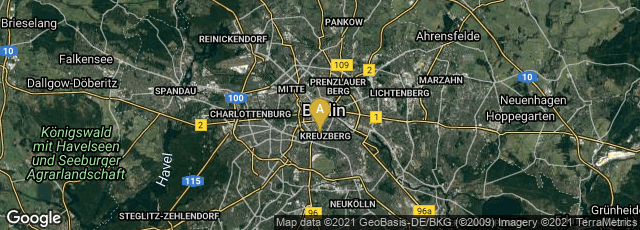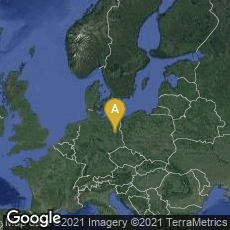

A: Bezirk Friedrichshain-Kreuzberg, Berlin, Berlin, Germany
Image from Jürgen's Schmidhuber's page on Zuse's "computing cosmos":
http://people.idsia.ch/~juergen/digitalphysics.html
In 1969 German engineer and computer designer Konrad Zuse published Rechnender Raum. It was translated into English in 1970 under the title, Calculating Space. This book on automata theory was the first book on digital physics.
"Zuse proposed that the universe is being computed in real time on some sort of cellular automata or other discrete computing machinery, challenging the long-held view that some physical laws are continuous by nature. He focused on cellular automata as a possible substrate of the computation, and pointed out (among other things) that the classical notions of entropy and its growth do not make sense in deterministically computed universes.
"Bell's theorem is sometimes thought to contradict Zuse's hypothesis, but it is not applicable to deterministic universes, as Bell himself pointed out. Similarly, while Heisenberg's uncertainty principle limits in a fundamental way what an observer can observe, when the observer is himself a part of the universe he is trying to observe, that principle does not rule out Zuse's hypothesis, which views any observer as a part of the hypothesized deterministic process. So far there is no unambiguous physical evidence against the possibility that "everything is just a computation," and a fair bit has been written about digital physics since Zuse's book appeared" (Wikipedia article on Calculating Space, accessed 05-16-2009).